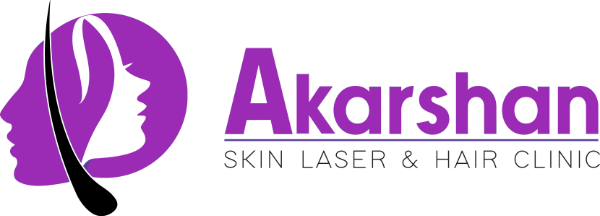CO2 Laser Resurfacing is an effective treatment for wrinkles, acne scars, stretch marks, sunspots, and myriad other skin conditions.
This cosmetic procedure uses a special type of laser called a CO2 laser to improve the appearance of the skin. It’s called “resurfacing” because the laser removes the top layers of the skin, allowing new, healthier skin to grow in its place.
Keep reading to learn how CO2 laser resurfacing works and how you can go through the procedure to get a healthier, cosmetically beautiful appearance.
How Exactly Does CO2 Laser Resurfacing Work?
The CO2 laser procedure can be performed on various parts of the body, but it’s most commonly used on the face.
During the procedure, the CO2 laser emits a concentrated beam of light on the skin. This makes the water in the skin cells absorb the energy, eventually causing the superficial skin layer (epidermis) to evaporate.
Furthermore, the deeper layer of the skin, the dermis, is heated during the procedure. This stimulates the growth of collagen, an important protein for skin health and structure.
Therefore, the overall process removes damaged or aged skin cells, including wrinkles, scars, and certain types of pigmentation. As the skin heals, new skin cells form, resulting in a smoother and more youthful appearance.
The Wonderful Benefits of CO2 Laser Resurfacing
1) Wrinkle Reduction
CO2 laser resurfacing is a great procedure to reduce wrinkles and fine lines on the face and neck. It’s effective in making these signs of aging less noticeable.
The laser used in this procedure encourages the production of collagen. By stimulating collagen production, the laser smoothes out wrinkles and gives the skin a more youthful appearance.
The heat generated by the CO2 laser also has another benefit. It causes the collagen fibers in the skin to rejuvenate, which promotes improved tightness and firmness of the skin.
The CO2 laser resurfacing procedure for wrinkle treatment is particularly helpful for people who have mild to moderate skin laxity or sagging.
2) Scar and Acne Scar Treatment
The CO2 laser resurfacing procedure offers several benefits for treating scars, including acne scars, surgical scars, and traumatic scars.
One of the main advantages is that it improves the cosmetic appearance of scars. The laser is used to carefully remove damaged tissues, including scar tissue. This smoothens and softens the appearance of the scar, making it less noticeable.
On top of it, targeting the scarred area with the laser encourages the production of new collagen, which “fills in” the scar. This process gradually reduces the visibility of the scar and promotes a more even skin texture.
Furthermore, CO2 laser resurfacing also encourages the growth of new and healthier skin cells. As the laser removes the damaged layers of skin, it stimulates the regeneration of fresh skin cells. These new cells replace the scarred tissue, resulting in a smoother and more even skin surface.
3) Stretch Marks and Trauma Marks Treatment
Stretch marks occur when the skin stretches rapidly, maybe due to weight gain, pregnancy, or growth spurts.
As said earlier, the laser used in this procedure helps to stimulate collagen production, which can help to fill in and smooth out the stretch marks.
Over time, this makes the stretch marks less noticeable.
Similarly, CO2 laser resurfacing can also treat trauma marks. Trauma marks are caused by injuries, burns, or surgeries. The laser is used to carefully target the affected area, removing damaged skin and stimulating new collagen production.
All in all, this process fades the appearance of trauma marks, making them less prominent and allowing the skin to heal and regenerate.
4) Treatment of Sunspots, Agespots (Pigmentation Correction)
The CO2 laser treatment is highly effective in reducing the appearance of hyperpigmentation, such as age spots and melasma, which are dark patches on the skin caused by excess pigmented cells.
The CO2 laser targets and breaks down excessive pigmented cells in affected areas. This restores the skin tone, making the dark spots less noticeable or completely fade over time.
One of the significant benefits of this procedure is its ability to penetrate deep into the skin and reach the underlying pigmented cells responsible for the discoloration. This makes it a powerful tool for addressing stubborn and deep-seated hyperpigmentation issues.
Another advantage of using the CO2 laser for pigmentation correction is its precision. The laser can be adjusted and controlled to target only the specific areas of concern, minimizing damage to the surrounding healthy skin. This precision helps to ensure that the treatment focuses solely on the pigmented cells without harming the rest of the skin.
5) Mole Removal
Another miraculous utility of CO2 laser resurfacing is mole removal. Some people are concerned that moles especially on the face area affect their cosmetic appearance. In that case, a special handle of the CO2 laser can remove the mole.
Note that the CO2 laser procedure only targets the superficial layer, i.e. the outermost layer of the skin. This makes it better than other radiofrequency energy-based devices.
The procedure removes moles completely and leaves no marks or scars on the treatment area.
6) Vaginal Tightening
This is a lesser-known use of the CO2 laser procedure. This process stimulates collagen production and triggers tissue remodeling, resulting in a tightening effect.
The procedure addresses vaginal laxity (loosening), promotes sexual satisfaction, and treats the effects of childbirth or aging.
The CO2 Laser Procedure Explained
As explained in the various utilities of the procedure, the CO2 laser machine is a wonderful work of science that serves multiple purposes.
Here’s a summarized rundown of the general steps in a CO2 laser procedure:
Step 1: Consultation
The first step in the procedure involves a dermatologist consultation. If you visit our clinic, Akarshan Skin Laser and Hair Clinic, our qualified dermatologist will sit with you and learn about your specific issue.
They will then devise a proper treatment plan and inform you about the procedure in detail.
Step 2: Preparation and Priming
If you want to treat minor cut marks or scars formed in childhood, you can receive a session on the same day and you’ll be done.
However, if you have a darker skin tone, deeper scars, or have a complicated issue, your dermatologist might take the priming route.
Priming reduces the risk of Post-inflammatory hyperpigmentation (PIH). Priming on the skin is done with superficial chemical peels or special creams containing glycolic acid, hydroquinone, etc.
Your session starts only after you finish the priming routine, which takes a week or two.
Step 3: Treatment
To begin with, your dermatologist may perform hydrafacial or suction to prepare the skin. They may also apply numbing creams on the treatment area to make the session easier. You’ll have to wait around 30-45 minutes after the application of numbing creams.
The actual procedure takes anywhere from 5 to 15 minutes depending on your specific needs. In some cases, you may need multiple sessions.
Step 4: Healing
After a single session, the treatment area takes from a week to 10 days to heal. You will get an after-treatment scar which is normal.
Meanwhile, it takes about a month for the complete rejuvenation and rebuilding of collagen in the treatment area.
Step 5: Aftercare
You will have to use antiseptic creams twice a week. If there are itchy sensations around the treatment area, perhaps you should switch to a better-quality moisturizer.
We always say this to all our treatment receivers: protection from the sun, use of sunscreen and umbrella are the best you can do from your side to speed up the aftercare.
Potential Side Effects and Complications of CO2 Laser Resurfacing
First and foremost, CO2 laser resurfacing is a safe procedure that can be performed effectively by a licensed dermatologist.
However, there are some short-term and long-term side effects that may occur for a variety of reasons. Some effects are seen after a procedure and are nothing to be concerned about. They will subside quickly.
Meanwhile, there may be some complications caused by improper handling by a treatment provider. This is why it is important to choose a dermatologist wisely. More on that later.
One of the most common side effects after CO2 laser resurfacing is redness and swelling in the treated area. This is a natural response and typically subsides within a few days to a couple of weeks.
Some patients may also experience itching or a stinging sensation during the healing process. Follow post-procedure instructions and use recommended skincare products to minimize these effects.
Another potential side effect of CO2 laser resurfacing is temporary changes in skin pigmentation. This can manifest as either hyperpigmentation (darkening of the skin) or hypopigmentation (lightening of the skin).
Fortunately, these changes are usually temporary and tend to resolve on their own over time. Sun protection and avoiding excessive sun exposure are crucial during the healing phase to minimize the risk of pigmentary changes.
Additionally, some patients may experience scarring, although this is relatively rare. As we said earlier, the risk of scarring can be minimized by selecting an experienced and skilled practitioner.
Post Inflammatory Hyperpigmentation
Post-inflammatory hyperpigmentation (PIH) is the darkening of the skin in areas that have experienced inflammation or injury during the procedure. While a temporary condition, it can be distressing for those who experience it.
PIH usually appears as flat, discolored patches of skin that get darker than the surrounding areas. It ranges in color from light brown to deep black, depending on the individual’s skin tone and the severity of the inflammation.
It can develop after CO2 laser resurfacing among some patients due to the controlled injury to the skin and subsequent healing process.
PIH is more common in people with darker skin tones, as they have higher levels of melanin. However, it can occur in individuals of all skin types.
The good news is that PIH is usually a temporary condition and tends to fade on its own over time, typically within a few months.
Protection from direct sunlight, topical treatments, and some time and patience are the best treatments for PIH.
CO2 Laser Resurfacing Kathmandu at Akarshan Skin Laser and Hair Clinic
At Akarshan Skin Laser and Hair Clinic, we pride ourselves on providing the best CO2 Laser Resurfacing treatment in Nepal for our clients.
Dedicated to delivering personalized and effective treatments to every individual, our team comprises highly trained and experienced skincare professionals.
They assess the skin condition and recommend the best-customized treatment for each person.
We ensure the safety and effectiveness of the CO2 laser treatment by using only high-quality, medical-grade products specifically designed for it in our clinic.
Akarshan Skin Laser and Hair Clinic has a relaxing and comfortable environment that makes the treatment experience enjoyable and stress-free.
We also provide post-treatment care instructions and recommend a skincare routine. This maintains the results of the treatment and supports the overall health of the skin.
Where to Get Started?
If you’re interested in learning more about our services, we invite you to contact us. Our knowledgeable and experienced staff is happy to answer any questions you may have. And we’ll be happy to provide you with a free consultation.
You can reach us by phone at +977 9813994443. We will respond to your request as soon as possible.
We also invite you to follow us on social media for updates, special offers, and before and after pictures. You can find us on Facebook and Instagram.
Contact us today and schedule your free consultation!



Is there available treatment for phymatous rosacea
Yes, you can consult with our dermatologist.